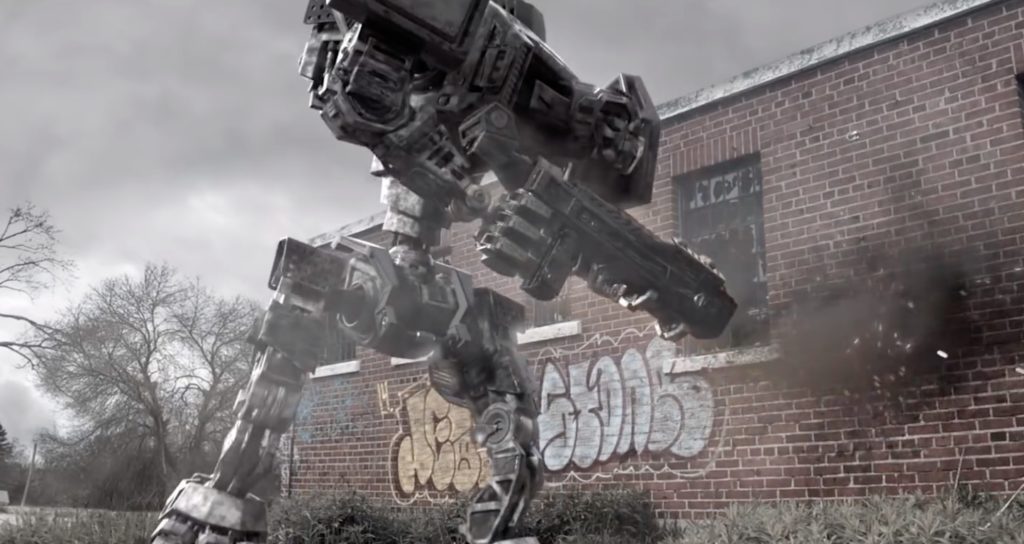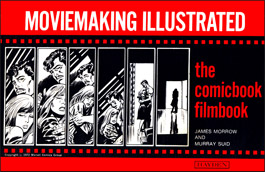One of the major arguments against vertical filmmaking is that the results look ugly when presented on YouTube, Vimeo, and other conventional screens. Those two black bars sandwiched around the content are a big distraction. Worse, when the action moves horizontally—for example, a dance sequence or a football match—the filmmaker is forced to pan back and forth to keep the subject in the frame. But what if a movie were conceived to play vertically? Then, you’d be in a new world. Three years ago, Canadian filmmaker Maxime Lamontagne demonstrated this kind of vertical filmmaking with his cutting-edge music video “How Can It Be?” While most of the video is static—no car chases or explosions—the production cleverly incorporates subtle motions. Look close, for example, and you’ll see the moving dots in the text area, signaling that one of the character is typing a new message. Lamontagne, who lives in Montreal, talks about his background and the making of the movie in the interview that follows.
Interview with Maxime Lamontagne
MMM: Could you tell us how you got into filmmaking?
Lamontagne: I always knew I wanted to be a director. It’s a bit of a cliché but it’s true. I started doing short films with my cousin at the age of 12 and we even did a feature length movie at the age of 16 that took us 3 years to make. When I look at it nowadays it’s garbage, but it sure was the ultimate spark that led me to then go to film school. I graduated from UQAM University in Quebec, in 2010.
MMM: What filmmakers influenced you?
Lamontagne: Tarantino, like many filmmakers of my generation I guess. But also Spike Jonze. I like his way of creating strange worlds and crazy ideas, handled in a realistic way. And I also like the fact that he directed a lot of music videos, short films and even was a part of “Jackass.” You can tell that he’s only doing the projects that matter to him, even if it’s “Bad Grandpa” because he loves his friends.
MMM: How did you get the assignment to create the “How Can It Be” music video?
Lamontagne: I was a director for DTO Films at the time, a music video production company based in Montreal and the label approached them for a MuchFact submission. There were a few directors pitching, so I tried something different in order to stand out. I told myself, I might as well create a unique concept, if the artist doesn’t like it, he can still choose another one. But to my surprise, he choose mine.
MMM: How did you develop the script?
Lamontagne: The sound at the beginning of the song reminded me of incoming text message. At first, it was suppose to be only the beginning of the clip that would be that way, but at one point, I had the idea “why not do the whole clip that way?” After that, the writing process was really stimulating. I really had fun creating the story, so it would be realistic, but also entertaining. The challenge was to always have different things happening in order for the viewers to remain interested and also in synch with the music and the lyrics.
MMM: Can you explain how you created the images?
Lamontagne: It was important for me to look like an hybrid between an iPhone and Android interface. So with the help of my amazing motion designer, Daravong Thongsavath, we created a style that was reminiscent of both, but was also unique. Once the look was decided, the animation process was pretty straightforward. The biggest part was really writing the script. Every sentence had a precise timing.
MMM: How did you find the actors?
Lamontagne: We did a simple casting call on Facebook and found those two teenagers who were an actual couple.
MMM: During the production, did you encounter any big challenges?
Lamontagne: No, it was actually a pretty easy production. But here’s a funny anecdote.
In order to have an avatar for the two characters and also the picture of them at the end, we needed to do a photoshoot. So one afternoon, I asked the two young kids to use my phone and go take different pictures of them in love. The result was really realistic, but at the end of the day, I had a bunch of pictures of two teenagers kissing on my phone.
MMM: The video was made three years ago. At that time, people were beginning to debate vertical filmmaking vs. horizontal. Did you have any feelings about that debate?
Lamontagne: It was a pretty unique approach at the time. It’s one of the reason the video was released on Vimeo instead of Youtube first, because at the time, Youtube didn’t offer the possibility to upload vertical video. I don’t have any particular opinion about this debate, but for this particular projet, I thought it would add to the concept. The fact that Harrison is a young artist and most of his fans are also young, I wanted them to experience the video on the device they use the most everyday. Instead of trying to convince them to watch the video on TV, why not embrace the fact that most of them will most likely watch it on their phone and use it to our advantage.
MMM: Did the video come out the way you wanted?
Lamontagne: Yeah, even 3 years later, I’m still really glad of how it came out.
MMM: How did the band feel about the video?
Lamontagne: It was a real pleasure to work with Harrison. Not only was he on board with the whole concept from day 1, but he even helped with the script. He made sure that it would feel realistic, in the slang and the way two teenagers would text each other.
MMM: What advice would you give to novices about making short videos?
Lamontagne: Don’t be scared to try an edgy idea or new approach, music video and short film are the perfect vessels to experiment.
# # #
You can follow Maxime Lamontagne’s work on
Vimeo.
The editors of MobileMovieMaking.com have chosen “How Can It Be” as the Mobile Movie of the Week.



 Previous post
Previous post
 Next post
Next post





